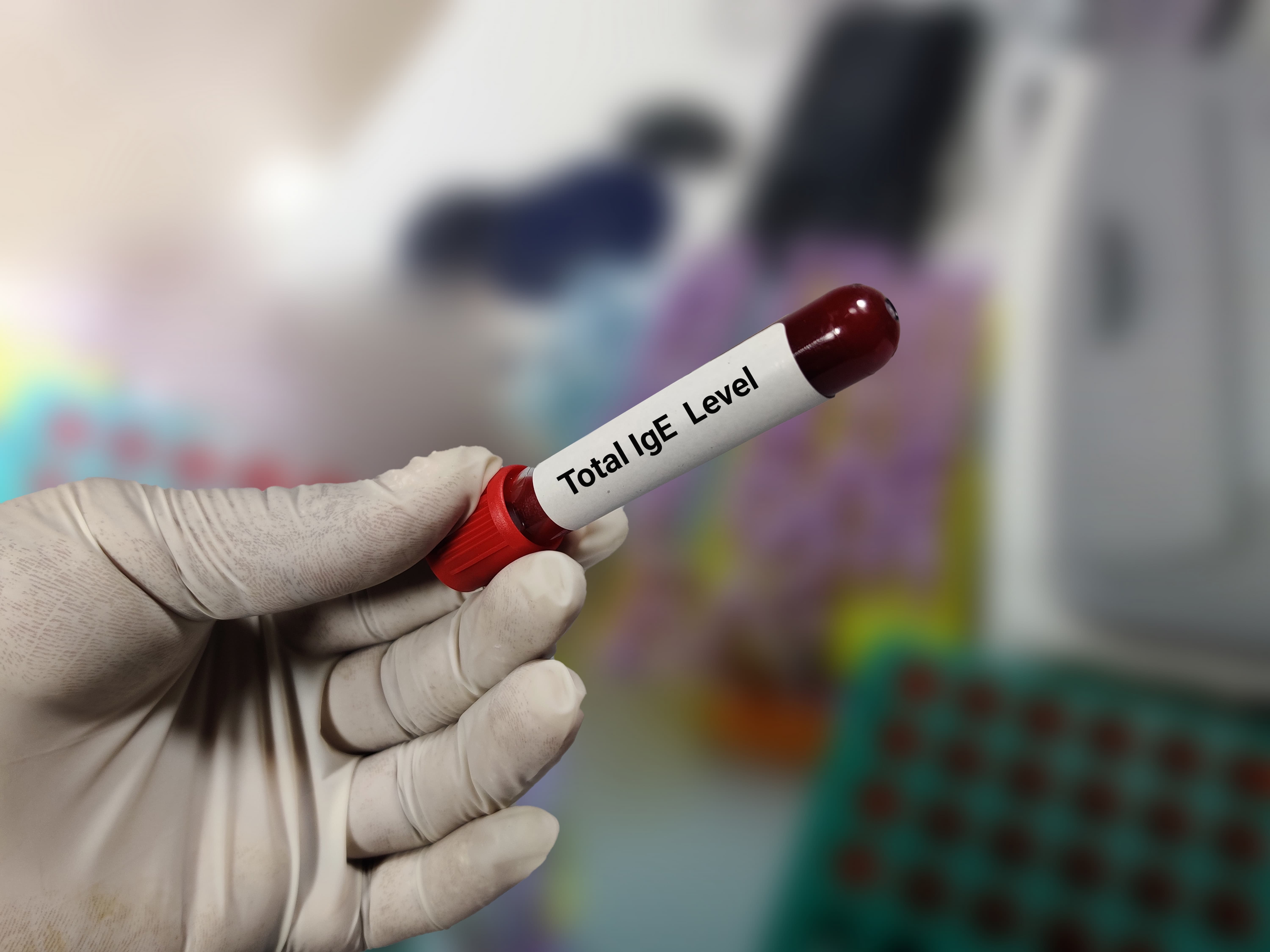Food Allergy vs. Food Intolerance
Discover the key differences between food allergies and intolerances, their causes, symptoms, and management strategies. Learn how to identify triggers and ensure effective treatment for improved health and well-being.

Written by
Last updated on 3rd Jul, 2025
Food allergies and intolerances are often mistaken for one another, yet they are distinct conditions with unique causes and impacts. While food allergies involve an immune system reaction, intolerances stem from the body’s inability to process certain substances. Understanding these differences is crucial for effective management and maintaining a healthy lifestyle.
Understanding Food Allergies vs. Intolerances
Food allergies trigger an immune system response to substances perceived as threats, leading to potentially severe reactions. In contrast, food intolerances occur when the body struggles to digest or process specific foods, causing discomfort but typically not life-threatening symptoms. Recognizing these differences is vital for identifying and addressing each condition appropriately.
Causes of Food Allergies and Food Intolerances
Knowing the root causes of food allergies and intolerances helps you distinguish between the two. Although some of the triggers overlap, the mechanisms are very different.
Common causes of food allergies include:
- Common Food Allergens: Foods like nuts, dairy, eggs, shellfish, wheat, soy, and fish contain proteins that may trigger an immune response in sensitive individuals. Reactions can range from mild skin rashes to severe anaphylaxis.
- Genetics and Family History: A family history of allergies increases susceptibility. If parents have food allergies, their children are more likely to develop them due to inherited genetic traits.
- Environmental Factors: Exposure to allergens, pollution, or urban living environments may raise the likelihood of developing food allergies, particularly in children.
- Gut Health and Microbiota: A healthy gut microbiome supports immune tolerance. Disruptions from antibiotic overuse or poor gut health can heighten the risk of allergies.
- Cross-reactivity: Proteins in one allergenic food may resemble those in another, causing reactions to both. For example, those allergic to birch pollen might also react to apples or cherries.
- Food Processing and Contamination: Processing methods can alter food proteins, making some foods more allergenic. Cross-contamination during manufacturing may also lead to unintended allergen exposure.
Common causes of food intolerances are:
- Lactose: Lactose intolerance results from a lack of an enzyme called lactase, which digests lactose.
- Gluten: Gluten is found in wheat, barley, and rye and causes discomfort for those with gluten sensitivity or celiac disease.
- Chemical Sensitivities: Intolerance reactions to additives such as sulfites in processed foods are a common cause of intolerance.
- Caffeine: Excessive consumption may result in symptoms like jitteriness or headaches for those sensitive to caffeine.
Recognising Symptoms of Food Allergy and Food Intolerance
Food allergies and intolerances often have similar symptoms, but the severity and type of reaction are very different.
Some of the common food allergy symptoms are:
- Rashes, hives, and skin itching.
- Vomiting and diarrhoea (in severe cases).
- Nasal congestion, wheezing, and shortness of breath.
- Lips, tongue or throat swelling, which can indicate a severe reaction like anaphylaxis.
To identify food intolerances, look for symptoms like:
- Bloating and abdominal discomfort.
- Diarrhoea or loose stools.
- Abdominal cramps and gas.
- Occasional headaches or fatigue, depending on the trigger.
Consult Top Dermatologists
How do Food Allergies and Food Intolerances Work?
The mechanisms behind allergies and intolerances explain the differences in symptoms and severity.
Food Allergies
An overactive immune response is what usually causes allergies. When the immune system mistakenly identifies harmless substances such as peanuts as threats, immunoglobulin E (IgE) antibodies are produced. These antibodies cause the release of histamines, which cause inflammation, swelling, and itching. Severe cases may develop into anaphylaxis that can be life-threatening and require immediate medical care.
Food Intolerances
Metabolic inefficiencies cause intolerances. For instance, a lack of enzymes such as lactase prevents the digestion of particular substances. This results in fermentation of undigested lactose in the gut and bloating and discomfort. Intolerances are not life-threatening and unlike allergies, they do not involve the immune system.
Diagnosing Food Allergies and Intolerances
Accurate diagnosis is critical for effective management. There are various tests and methods to find out the triggers behind these conditions.
Common diagnostic tests for food allergies are:
- Skin Prick Test: Allergens in small amounts are introduced to the skin to observe how they react.
- Blood Test: This is done to check levels of IgE antibodies to suspected allergens.
- Oral Challenge Test: Allergens are exposed to the patient’s immune system under medical supervision to confirm allergies.
Consult Top Dermatologists
Diagnostic methods for food intolerances are:
- Elimination Diet: In this method, gradual removal and reintroduction of food items is done to pinpoint direct triggers.
- Hydrogen Breath Test: This test detects fermentation of undigested substances like lactose in the gut.
- Food Diary: For this method, the patient has to maintain a diary in which they have to track their meals and look for patterns of reaction and symptoms over time.
Treatment and Management of Food Allergies and Food Intolerances
The treatment strategies rely very much on the type and degree of condition that the patient has.
For food allergies, treatment options include:
- Antihistamines: This medication is given to relieve mild to moderate symptoms by blocking histamine release.
- Epinephrine Auto-Injectors (EpiPen): It is a life-saving emergency treatment for anaphylaxis.
- Immunotherapy: Gradual exposure to allergens desensitises the immune system over time.
Common treatments suggested for food intolerances include:
- Enzyme Supplements: Lactase supplements help those with lactose intolerance digest dairy products.
- Gradual Exposure: Controlled introduction of small amounts of the intolerant substance (under medical supervision) may help build tolerance.
- Symptom Relief Medications: Probiotics or antacids can alleviate digestive discomfort.
Preventing Food Allergies and Food Intolerance Reactions
Proactive measures can significantly reduce the risk of adverse reactions. Preventing food allergies requires to:
- Avoid Known Allergens: Identify and eliminate allergens from the diet.
- Read Food Labels: Look for hidden allergens in processed foods.
- Be Prepared for an Emergency: Carry an epinephrine auto-injector and educate your family and caregivers on how to use it.
- Environmental Control: Air purifiers can help reduce your exposure to airborne allergens.
For preventing food intolerances, it is suggested that:
- Make Dietary Modifications: Switch to lactose-free or gluten-free alternatives as needed.
- Plan Meals: Avoid triggering substances by planning your meals.
- Take Professional Guidance: Get balanced meal plans from a dietitian according to specific intolerances.
Differences Between Food Allergies and Intolerances
Although food allergies and intolerances share some similarities, their fundamental differences are crucial for effective management.
Comparing Allergies and Intolerances
| Aspect | Food Allergie | Food Intolerances |
|---|---|---|
| symptoms | Rashes, swelling, anaphylaxis. | Bloating, cramps, headaches. |
| Severity | Life-threatening (e.g., anaphylaxis). | Not life-threatening but causes discomfort. |
| Onset | Rapid (minutes to hours) | Gradual (hours to days) |
| Treatment | Antihistamines, epinephrine, and immunotherapy | Avoid triggers, enzyme supplements, and dietary changes. |
Conclusion
Distinguishing between food allergies and intolerances is vital for effective management and improved well-being. Allergies involve an immune response, often requiring immediate medical intervention, while intolerances are metabolic issues that can be managed through dietary adjustments. By understanding their differences and seeking professional guidance, individuals can take informed preventative measures, tailor their lifestyles, and lead healthier lives. Accurate diagnosis and proactive management are key to minimising discomfort and ensuring overall health.
Consult Top Dermatologists
Consult Top Dermatologists

Dr. S Madhuri
Dermatologist
10 Years • MBBS, MD. DVL, DNB, Fellow (Dermatosurgery & Lasers)
Secunderabad
Apollo Hospitals Secunderabad, Secunderabad
(300+ Patients)

Dr. Priyankar Mishra
Dermatologist
11 Years • MBBS, MD Dermatology , Venereology & Leprosy
Kolkata
MCR SUPER SPECIALITY POLY CLINIC & PATHOLOGY, Kolkata

Dr. Parul Gohil
Dermatologist
5 Years • MBBS, MD(DERMATOLOGY,VENEREOLOGY & LEPROSY)
Bengaluru
Apollo Clinic, JP nagar, Bengaluru

Dr. Priyankar Misra
Dermatologist
10 Years • MBBS,MD(D V & L)
Kolkata
Tridermis Skin and hair clinic, Kolkata
(25+ Patients)

Dr. Krupa Modi
Dermatologist
5 Years • MBBS, MD Dermatology, Venerology & Leprosy
Mumbai
B.A.E CLINIC, Mumbai
Consult Top Dermatologists

Dr. S Madhuri
Dermatologist
10 Years • MBBS, MD. DVL, DNB, Fellow (Dermatosurgery & Lasers)
Secunderabad
Apollo Hospitals Secunderabad, Secunderabad
(300+ Patients)

Dr. Priyankar Mishra
Dermatologist
11 Years • MBBS, MD Dermatology , Venereology & Leprosy
Kolkata
MCR SUPER SPECIALITY POLY CLINIC & PATHOLOGY, Kolkata

Dr. Parul Gohil
Dermatologist
5 Years • MBBS, MD(DERMATOLOGY,VENEREOLOGY & LEPROSY)
Bengaluru
Apollo Clinic, JP nagar, Bengaluru

Dr. Priyankar Misra
Dermatologist
10 Years • MBBS,MD(D V & L)
Kolkata
Tridermis Skin and hair clinic, Kolkata
(25+ Patients)

Dr. Krupa Modi
Dermatologist
5 Years • MBBS, MD Dermatology, Venerology & Leprosy
Mumbai
B.A.E CLINIC, Mumbai




